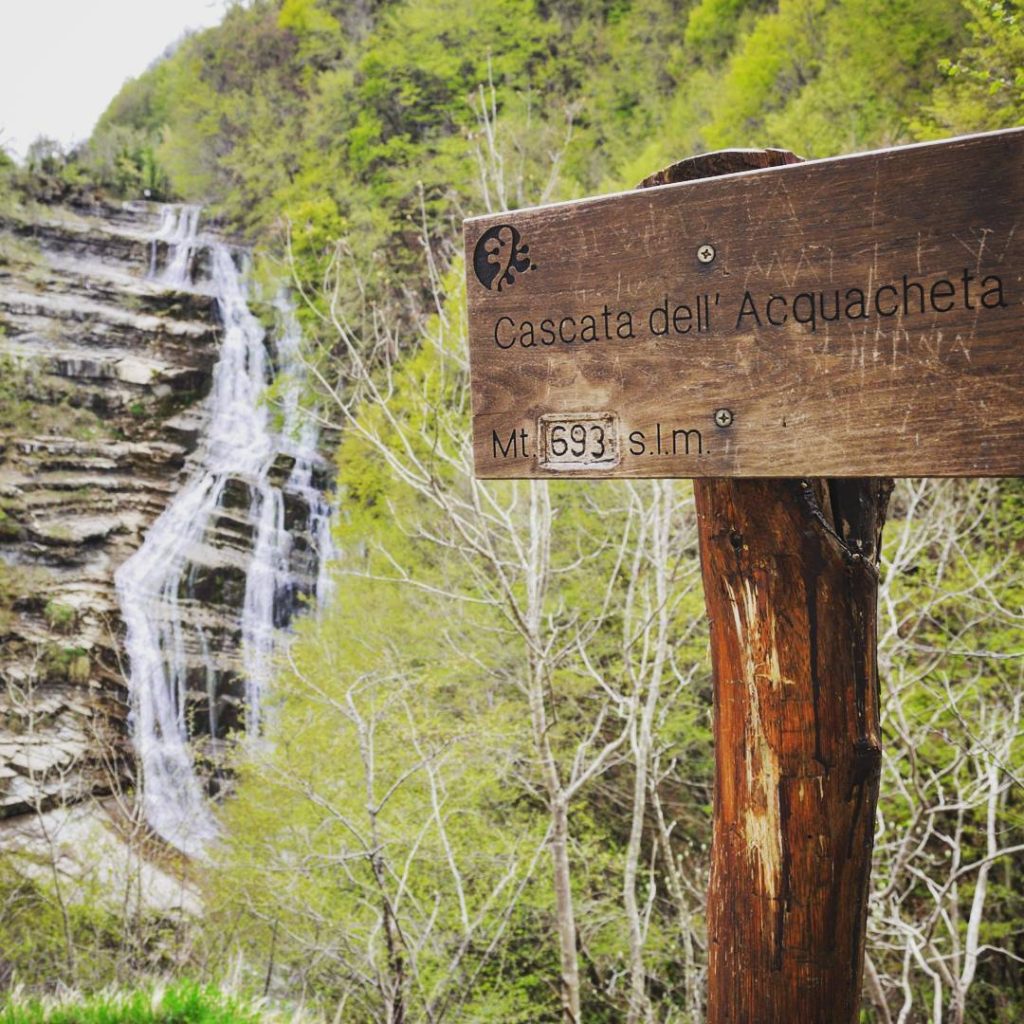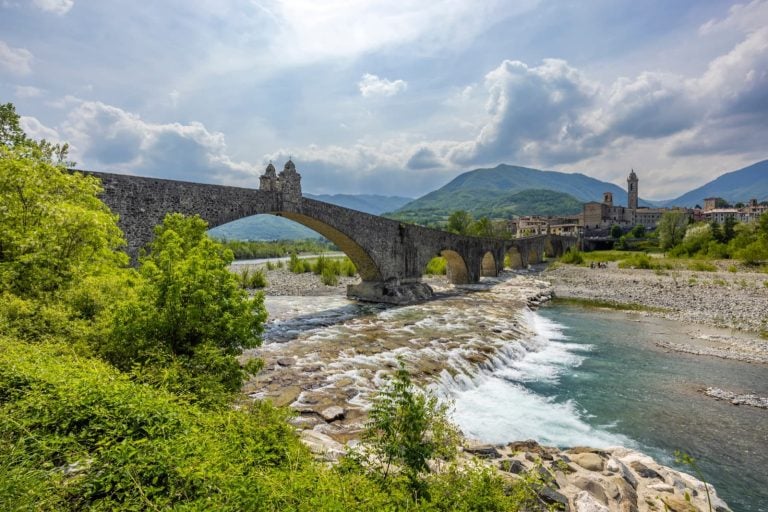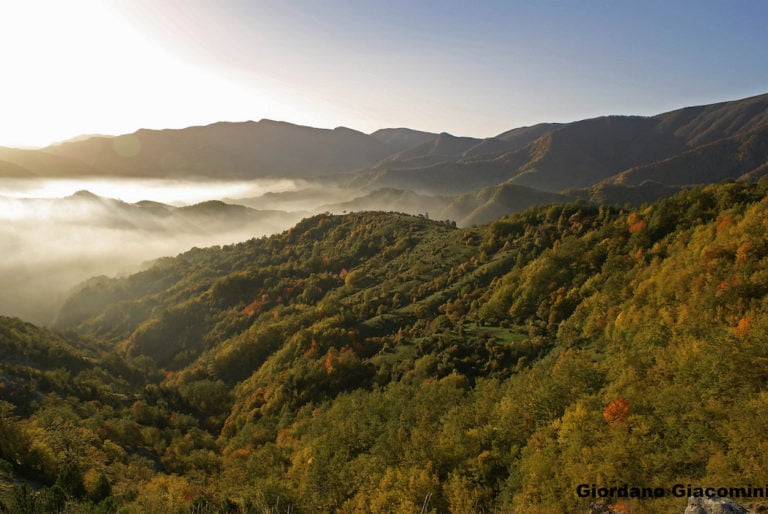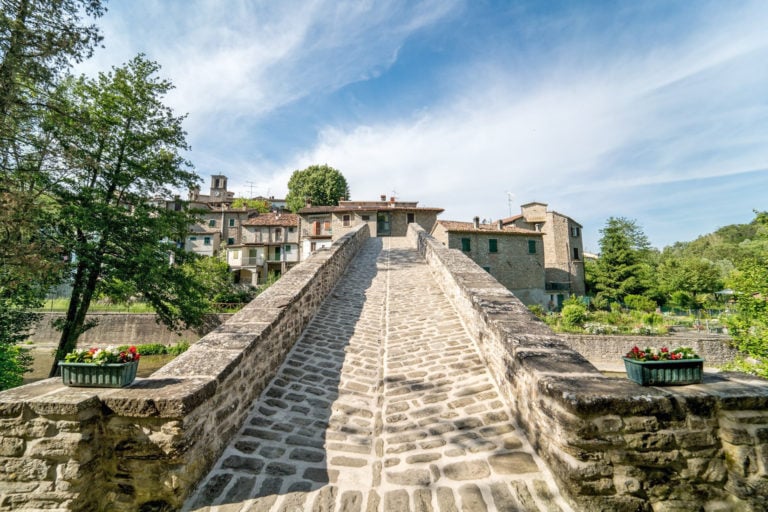In the Montone Valley, in the province of Forlì, we discover Portico di Romagna and San Benedetto in Alpe, two small villages belonging to the Association of the Municipalities of Romagna Forlivese.
Recognised with the Orange Flag of the Touring Club, they stand out for their excellent conservation and for the extreme care given to their urban layout, as well as for a naturalistic context of considerable value, that of the National Park of the Casentino Forests.
History
The history of the small village of Portico di Romagna is very ancient; its name comes from the Latin porticum and dates back to Roman times, when these lands were liberated from the Gauls.
However, it was during the Middle Ages that the town gained more and more prestige, as it was an important stop on the route that connected Romagna to the beautiful Florence.
The clashes between the various noble families, eager to obtain dominion over this strategic area for the control of Italy, ended definitively in 1386 when Portico became the capital of the Romagna territories under the control of the Florentine Republic.
The history of San Benedetto in Alpe is linked to that of the abbey of the same name, which has stood in the area since the year 1000.
Dante Alighieri himself, an exile from Florence, found shelter in these very places. Added to this is the fact that the family of his much-loved Beatrice also owned a building (Palazzo Portinari) that still stands today in the centre of the historic village.
What to see
The village, divided into three ancient levels, is certainly very picturesque and has a medieval flavour, as beautiful as the nature that surrounds it and wraps it in a green embrace.
The streets of the centre are lined with ancient palaces of cultural interest, such as Palazzo Portinari, Palazzo Traversari and Palazzo Mazzoni.
The Ponte della Maestà, which probably dates back to the 14th century, is a must on any visit to this small mountain town. Perfectly preserved, it welcomes every year the pilgrims who retrace the road to Assisi.
In the hamlet of Bocconi, on the other hand, you will find the hunchbacked Ponte della Brusia, which takes you to the centre of the town, where you will find the Vigiacli Tower, or Tower of the Guards, around which the town grew.
What to do
Summer: you can escape the heat of the summer by going to the Acquacheta waterfall, taking a green walk through nature and spending a beautiful day in the open air.
Autumn: just a few steps from Portico we can find a true “record” of Romagna’s nature: the volcano of Monte Busca, the smallest in Italy! A perennial tongue of fire rising from the earth, recommended on autumn nights to illuminate and warm your body and soul.
Winter: in Campigna, mountain lovers will relish skiing and snowboarding on the many slopes in the national park.
Spring: the natural attractions around the village are beautiful at any time of year, but the Casentinesi Forests National Park is the place to be in the spring, whether you love trekking, wildlife, or photographing breathtaking landscapes.
Events
Autumn: this is the perfect time for a Food Festival (Festival of the Fruits of the Undergrowth), as mushrooms, truffles, chestnuts and juniper berries add a seasonal dash of colour and flavour to the local cuisine. The array of stalls feature craft producers specially selected over many years to celebrate the Tuscan-Romagna tradition.
Winter: the village comes alive with lovingly crafted Christmas cribs on display in many of its most evocative corners.
Pilgrim paths and walking trails
Two spiritual paths meet amid the mountains: St Anthony’s Way and Dante’s Walk. The former leads to Padua and the saint’s tomb in Montepaolo, on a 190-mile route via Monselice, Rovigo, Ferrara, Bologna, and various natural parks.
Dante’s Walk recreates the journey of Italy’s greatest poet into exile from Florence through the ancient paths of Tuscan Romagna. This evocative route has an air of the long-lost Middle Ages about it, traversing as it does the lands extolled in the verses of the Divine Comedy.
The “Emilia Romagna Villages” section is dedicated to Villages that are part of the Associations Borghi più belli d’Italia, Bandiere Arancioni del Touring Club & Borghi autentici d’Italia.
Author

Arturo Castellini
I am a curious explorer from Emilia-Romagna and usually spend my time planning my next trip, searching for the most authentic traditions of the Italian hinterland.
You may also like
1. The most beautiful waterfalls in Emilia-Romagna
by Elisa Mazzini /// March 29, 2018
The “Orange Flag” Villages in Emilia-Romagna
by Elisa Mazzini /// December 10, 2024

Interested in our newsletter?
Every first of the month, an email (in Italian) with selected contents and upcoming events.
The Casentinesi forests, Monte Falterona and Campigna National Park
by Walter Manni /// March 26, 2018









